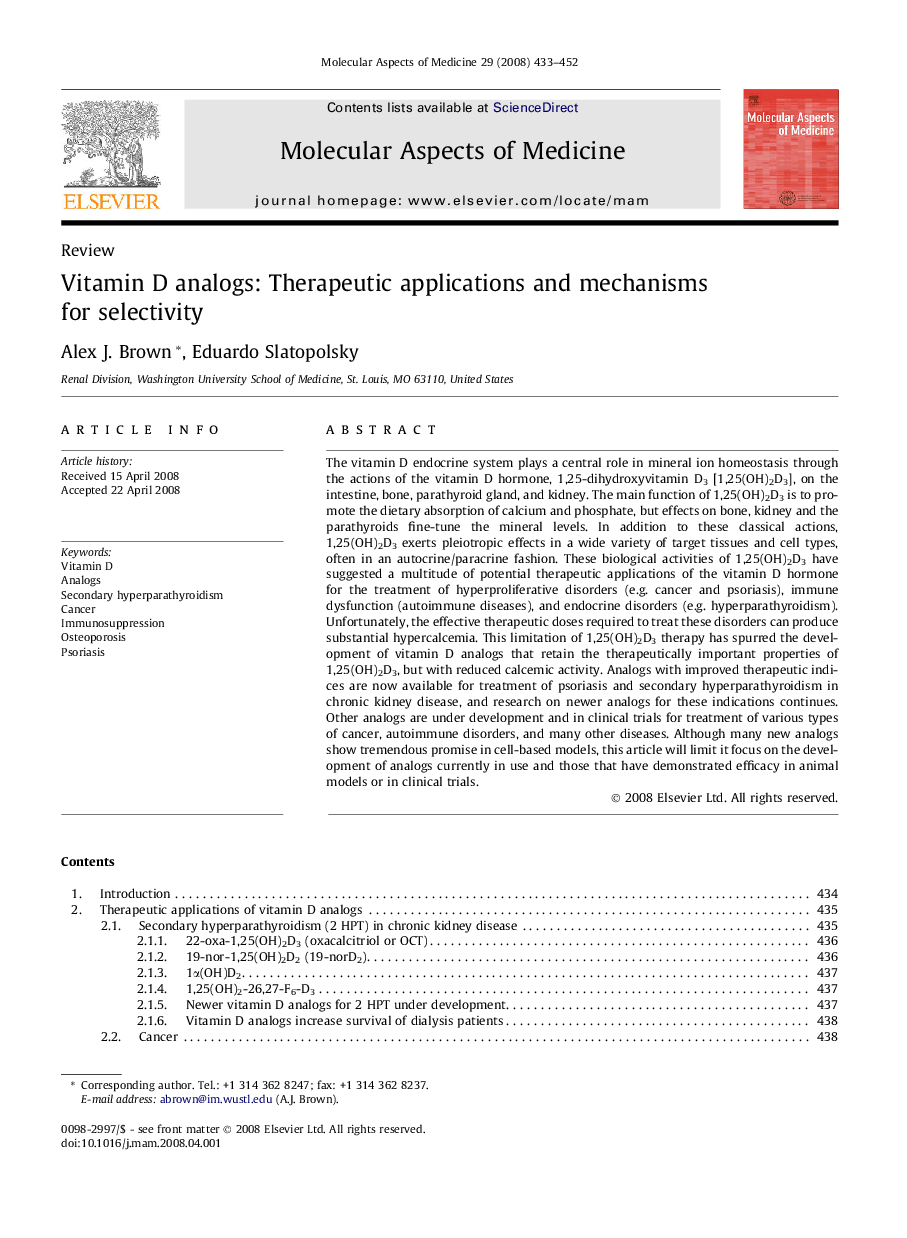| Article ID | Journal | Published Year | Pages | File Type |
|---|---|---|---|---|
| 1995951 | Molecular Aspects of Medicine | 2008 | 20 Pages |
The vitamin D endocrine system plays a central role in mineral ion homeostasis through the actions of the vitamin D hormone, 1,25-dihydroxyvitamin D3 [1,25(OH)2D3], on the intestine, bone, parathyroid gland, and kidney. The main function of 1,25(OH)2D3 is to promote the dietary absorption of calcium and phosphate, but effects on bone, kidney and the parathyroids fine-tune the mineral levels. In addition to these classical actions, 1,25(OH)2D3 exerts pleiotropic effects in a wide variety of target tissues and cell types, often in an autocrine/paracrine fashion. These biological activities of 1,25(OH)2D3 have suggested a multitude of potential therapeutic applications of the vitamin D hormone for the treatment of hyperproliferative disorders (e.g. cancer and psoriasis), immune dysfunction (autoimmune diseases), and endocrine disorders (e.g. hyperparathyroidism). Unfortunately, the effective therapeutic doses required to treat these disorders can produce substantial hypercalcemia. This limitation of 1,25(OH)2D3 therapy has spurred the development of vitamin D analogs that retain the therapeutically important properties of 1,25(OH)2D3, but with reduced calcemic activity. Analogs with improved therapeutic indices are now available for treatment of psoriasis and secondary hyperparathyroidism in chronic kidney disease, and research on newer analogs for these indications continues. Other analogs are under development and in clinical trials for treatment of various types of cancer, autoimmune disorders, and many other diseases. Although many new analogs show tremendous promise in cell-based models, this article will limit it focus on the development of analogs currently in use and those that have demonstrated efficacy in animal models or in clinical trials.
